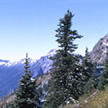| Report Documents
|
|
|
| |
| Map Plotfiles
|
-
No files of this type available
|
| |
| Data Files
|
-
No files of this type available
|
| |
| Digital Map Files
|
-
No files of this type available
|
| |
| Image Document
|
-
No files of this type available
|
| |
| Video Files
|
-
No files of this type available
|
| |
|
All Documents
|
|
|
| Contact
|
|
-
If you have any questions on the information presented, or require additional report data or attachments, please contact the Report Contact
|
|
|
Under MWLAP permit, a total of 22 large woody debris and boulder riffle enhancements were completed between July 22 and July 29, 2005 (Table 1, Figure 3). Ten were located in the mainstem (6 LWD and 4 riffle enhancements) and 12 were located in the South Englishman River (10 LWD and 2 riffle enhancements).
|
Author: McCulloch, M.; BC Conservation Foundation
|
|
|
Date Published: Jan 2006
|
Report ID: 8498
|
Audience: Government and Public
|
The Englishman River is one of the most significant salmon bearing streams on the central east coast of Vancouver Island. The watershed supports all five species of anadromous salmon as well as rainbow and cutthroat trout, and supplies water for the city of Parksville, BC. In 2000, the BC government designated the Englishman as a sensitive stream under the Fish Protection Act. Also in 2000, the watershed became part of the United Nations designated Mount Arrowsmith Biosphere Reserve (Jamieson 2000). In recent years, the Outdoor Recreation Council of British Columbia has identified the Englishman as one of the most threatened watersheds in BC.
The Englishman River was the first watershed to be selected by the Pacific Salmon Endowment Fund Society to receive attention in the Georgia Basin salmon recovery planning process for coho and steelhead. The vision of the Pacific Salmon Endowment Fund (PSEF) is to achieve healthy, sustainable and naturally diverse Pacific salmon stocks through the development of recovery plans for specific watersheds. The Pacific Salmon Foundation manages the annual proceeds of PSEF, and now contributes funding to seven watershed recovery plans in BC. The Englishman River Watershed Recovery Plan (ERWRP; Bocking and Gaboury 2001) was developed to identify and prioritize activities required to achieve recovery goals for the watershed and its fish stocks. Several other reports including Overview Assessment of Fish and Fish Habitat in the Englishman River Watershed (Lough and Morley 2002) and Englishman River Channel Condition Assessment (nhc 2002) have been developed to complement the original plan and facilitate recovery activities.
Significant off channel development has taken place in the Englishman River watershed, with the creation of the TimberWest (a.k.a. Clay Young) and Weyerhaeuser (a.k.a. Nature Trust) side channels. These channels extend for 1,300 and 950 m, respectively (8% of watershed anadromous length), and account for 15-25% of coho smolt production in the watershed (Decker et al. 2002).
To date extensive restoration work in the mainstem Englishman River has only occurred in 2003 and 2004 with the installation of 32 LWD and boulder riffle sites, based on prescriptions by LGL Ltd. (Gaboury 2003; Appendix A). Previous work completed through the ERWRP included several debris catcher structures designed to protect the Weyerhaeuser side channel, capture wood and create lateral scour pools. Additional projects have been completed near the Highway 19a Bridge to reduce bank erosion with ancillary fish habitat benefits.
|
Report Type
| |
Fish and Aquatic Habitat Information |
| |
Subject
| |
Fish Species - Salmon (General) - Oncorhynchus spp. |
| |
Region - Vancouver Island |
| |
Fish and Fish Habitat - Restoration |
| |
Watershed Groups - 920 - Vancouver Island (East) Rivers |
| |
|
|
